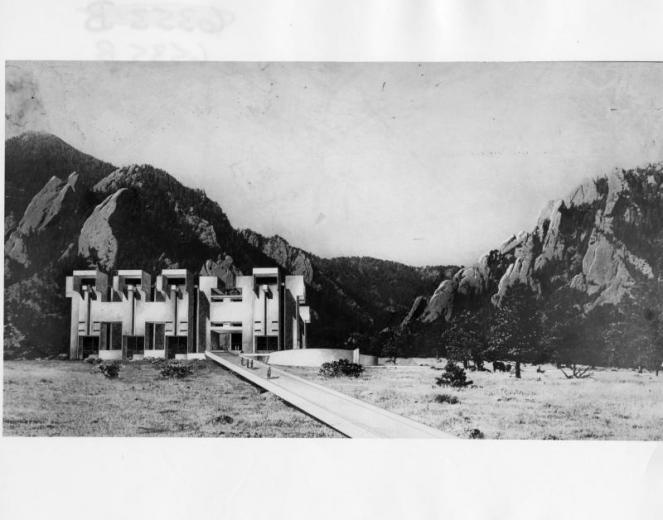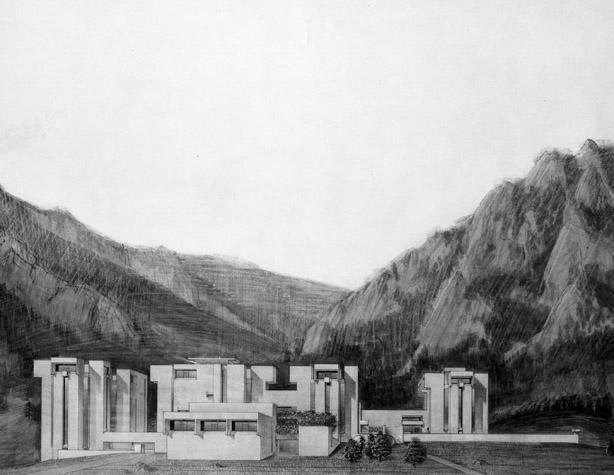Design of the Mesa Laboratory

Pei described the early days of work on the NCAR commission in almost religious terms. The site, to him, suggested a spiritual dimension that stretched and challenged all of the preconceptions he had developed in his career to that time. Pei spent a tremendous amount of time on the mesa. He hiked it at all hours of the day and evening, watching the sun hit its stony crags, sitting among the grazing deer. He picnicked there and even camped overnight.
The core of the challenge was to create a man-made structure bold enough not live up to the immensity of the setting and yet compatible enough not to try to compete with it, a competition any building was bound to lose.

Early conceptual design of the Mesa Laboratory, circa 1962-1965
One image at the back of the architect's mind gave him the courage to pursue his creative vision. The year before, in 1960, he had visited an archaeological site in Peru: Ollantaytambo, an Incan settlement perched on the steep slopes of the upper Andes. Among the terraces and rubble walls of Ollantaytambo stand six gigantic stone slabs. The monoliths, only a few yards wide, tower over the rest of the ruins. As with Stonehenge, another of Pei's favorite sites, the function of the monoliths and the manner in which they were brought to their remote location are unknown. While they look nothing like the pink NCAR towers, their imposing presence, combining natural and man made beauty, gave Pei the conviction to search for a comparable achievement in the vocabulary of modern architecture.
With Ollantaytambo in mind, Pei decided to explore the indigenous architecture of the American Southwest. He and his wife rented a car and set out on a journey that was to take them from Albuquerque, New Mexico to Boulder, stopping at numerous Native American settlements, ancient and modern, on the way. When Pei reached Mesa Verde, he knew he found what he was looking for.
In the crude and impressive structures of Mesa Verde, Pei saw solutions to design problems that had haunted him. By using indigenous building materials, or at least materials that reflected the natural setting, he could achieve a structure that would blend with its surroundings. The stone and mud of Mesa Verde were obviously not economical or practical for a contemporary structure, so Pei's modernistic solution was to use reinforced concrete composted of aggregate drawn from a nearby quarry. To color the cement, Pei hit on the innovative technique of using sand ground from the same stone, rather than commercial pigments.